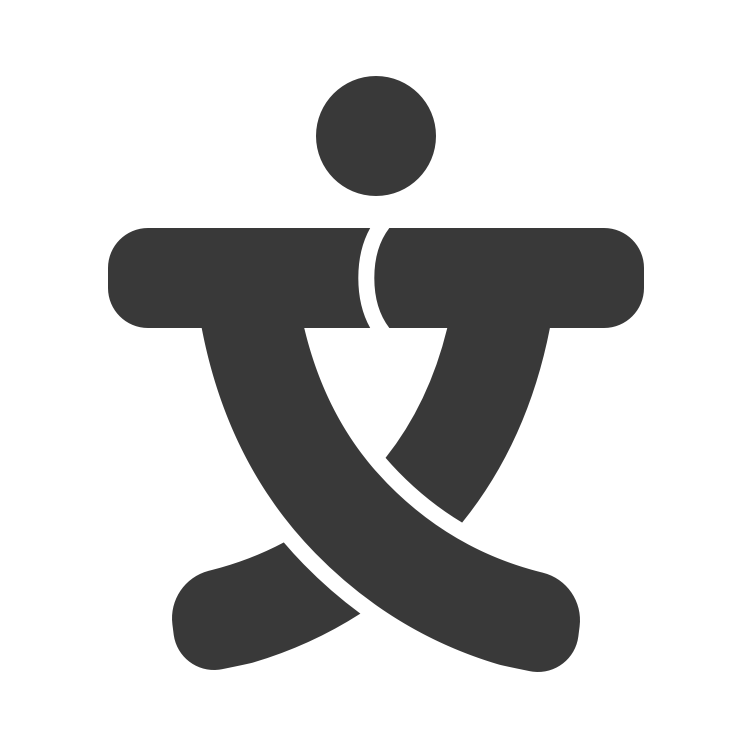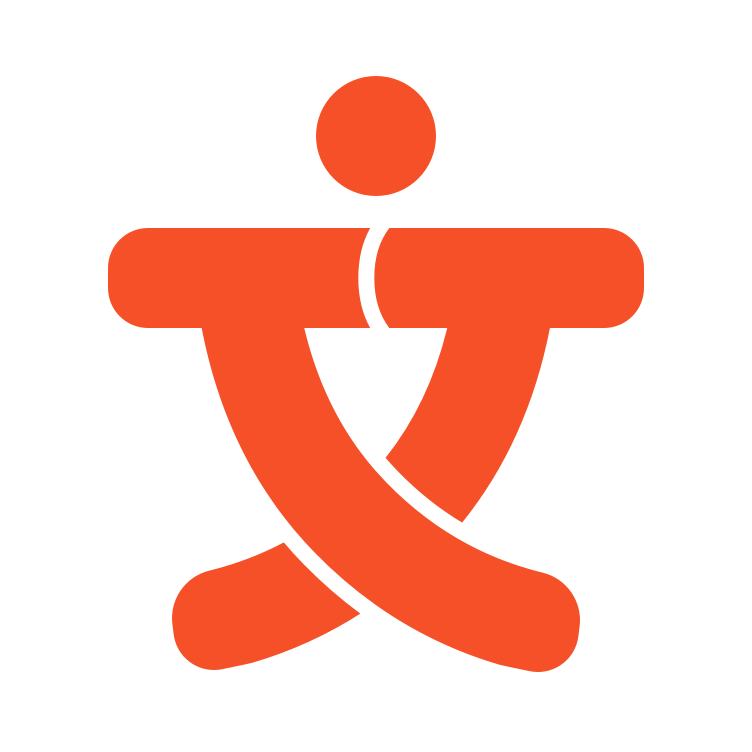CONTEXT
Design a product using Design Thinking!
In ENTR 599.021 we were exposed to new ways of thinking and viewing the world around us. From understanding the different components and roles of a team to testing a final product, this class explored and clarified not just what makes for successful innovation but what makes for a successful and long lasting team. Through Design Thinking, this class didn't just teach students technical skills but the cultural and contextual values that drive and push human innovation.
At the beginning of the semester, our in-class team was tasked with creating a project using Design Thinking. Design Thinking is a new approach to product creation, innovative for its customer-centered thinking and rapid iteration problem solving. As we learned about Design Thinking theories, processes, and practices in class we would be immediately putting them to practice as we developed and created a product to pitch at the end of the semester.
EMPATHIZE
Interviewing potential users: Identifying an issue using empathy
Our first step as a team was creating a set of useful questions to scope out potential problems we could work towards solving with our product. The conversation started on Google Hangout as we discussed several topics, such as universal healthcare, social drinking around campus, voting, and time management. We spent a lot of time focusing on universal, prevalent, and accessible problems and wanted something we all had some sort of experience with so we could all contribute and easily find people to interview. Our discussions varied and all of us had a lot to say about the different topics which was good because at least our pool of choices offered a wide variety of opinions, ideas, and issues.
We have all suffered long nights before assignments are due. As students, time management is a crucial skill to have as balancing work, school, and play can be quite challenging. Therefore, we ended up focusing on the problem that was relevant and applicable to everyone on the team: time management.
Our first set of questions was broad, open-ended, and all-encompassing, so we didn't end up leading our interviewees and trapping them into a set answer while taking into account all possible issues that could be the beginning of a potential problem-solving product.
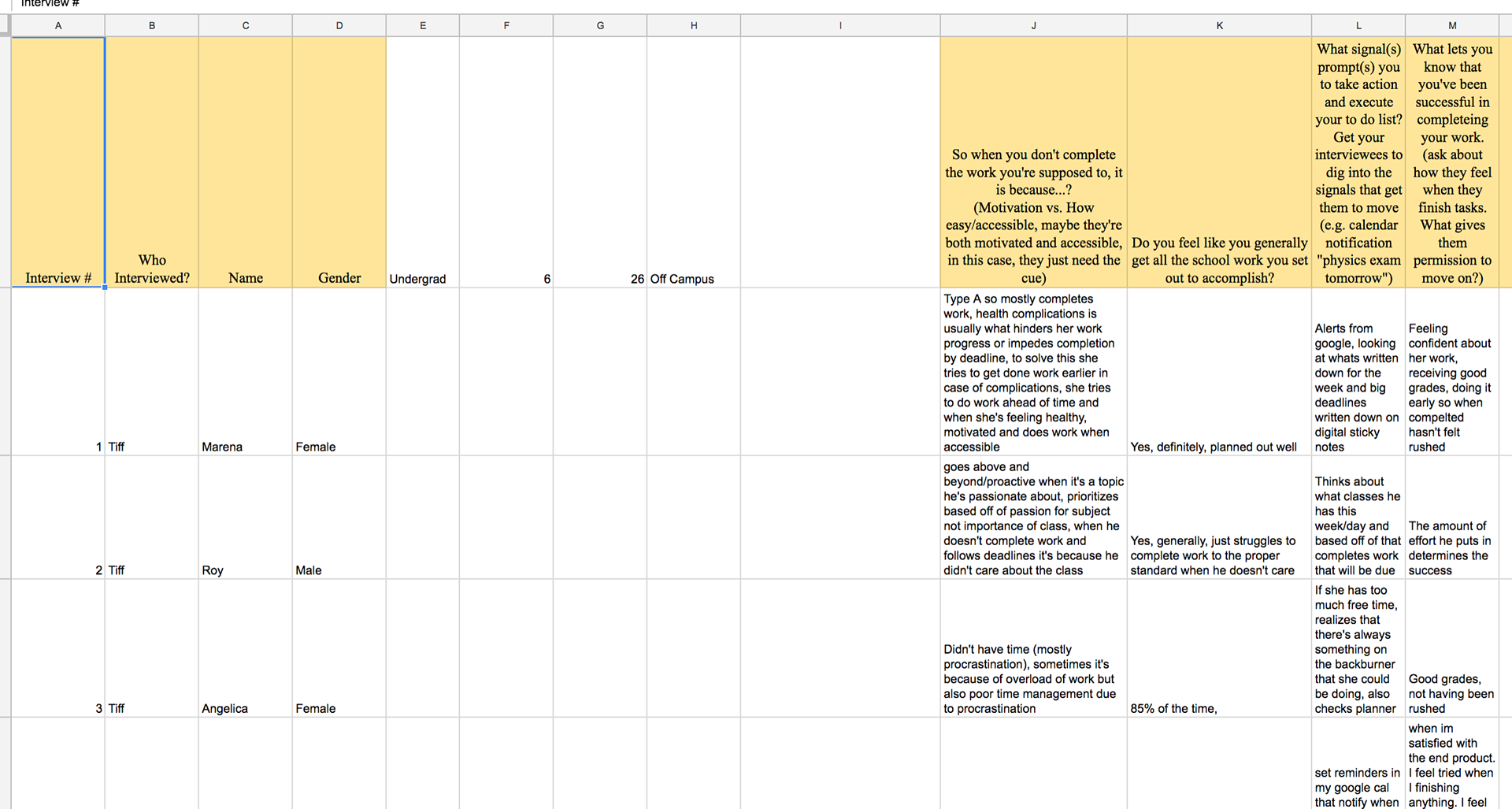
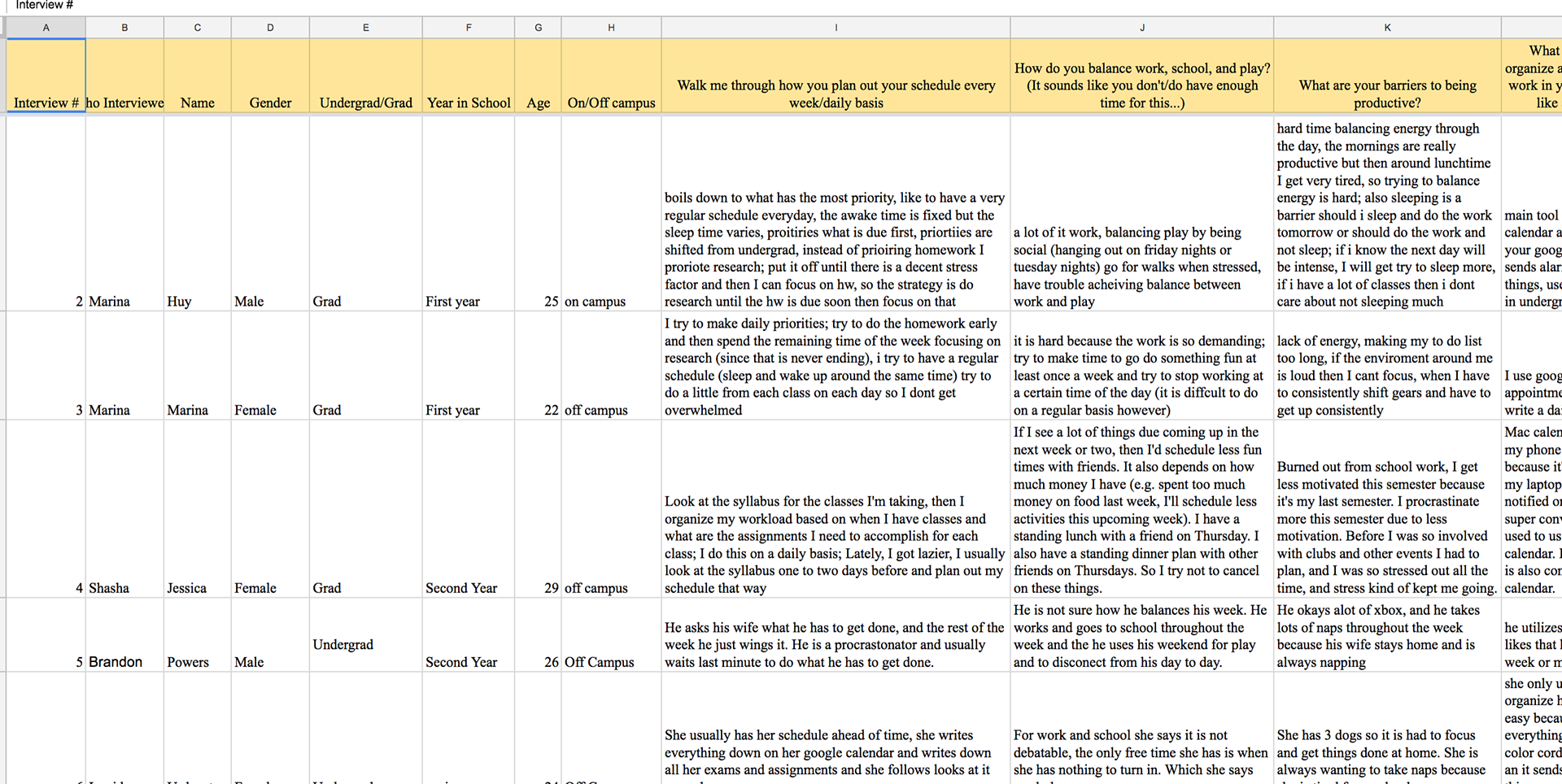
Second round of interviews: Clarifying the solution and gathering research
After going over the results of our first effort, we conducted a second round of interviews with a more narrow scope of questions. We saw that many people expressed problems dealing with the offbeat and irregular life schedule of being a student, with school playing a huge part in people's lives that could disrupt work, leisure, and home.
With the data we gathered, we put together an empathy map, picking apart individual characteristics and factors of different issues and pains when dealing with poor school, work, play time management.
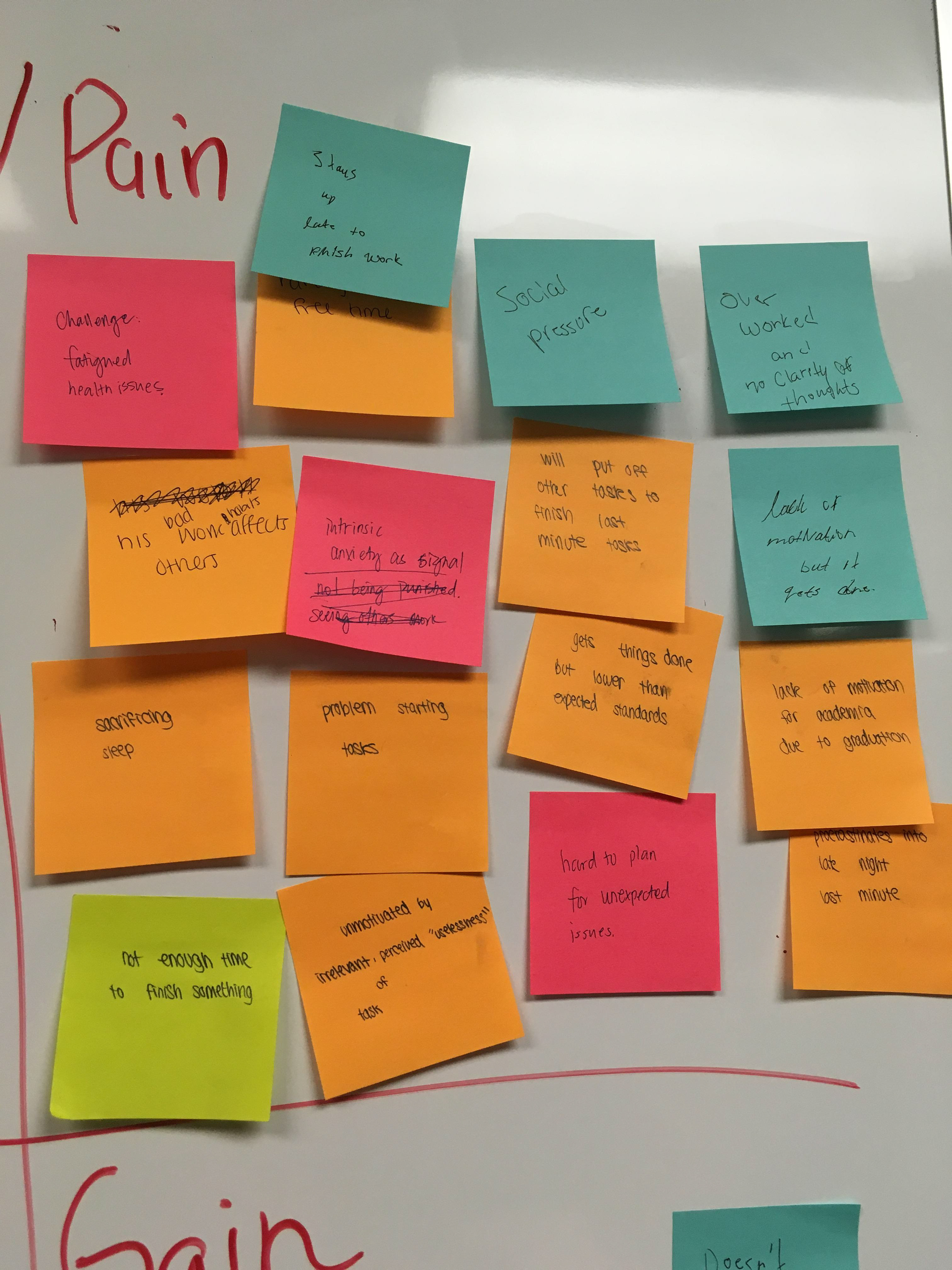
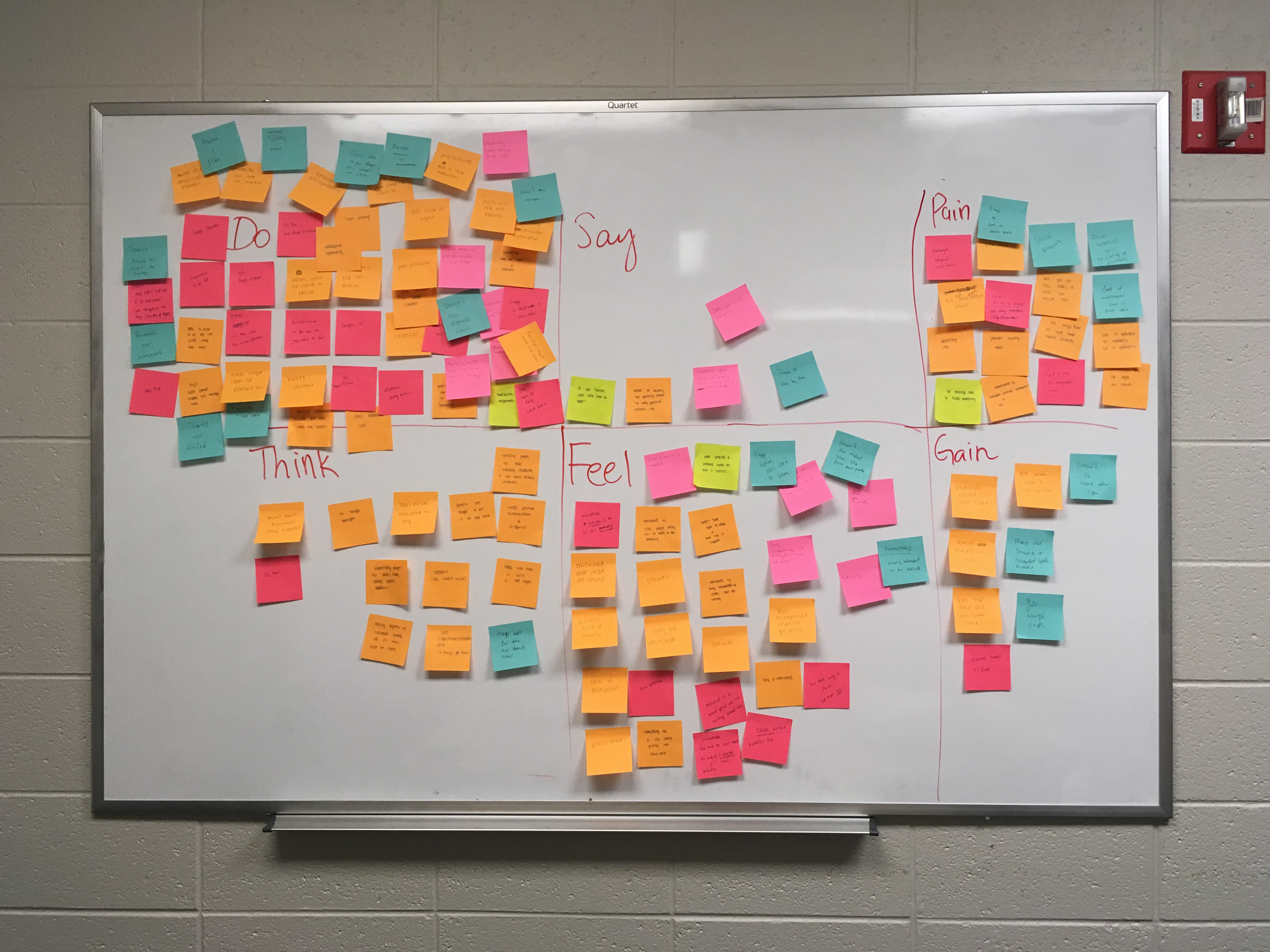

Personas: Understanding our primary user
Taking the insights from our empathy map, we were able to categorize and create a variety of personas and tropes that could be relevant to our product. From the list we organized what would be our primary persona, or the type of customer our product would cater to.
The Procrastinator (Primary User)
* Sacrifices sleep to finish his work
* Does work at night and starts and finishes the assignment the day before it is due
* Has a lack of motivation when the assignment seems like busy work or knows that he will not learn from it
* Feels that he does not get enough sleep
* Will think about the things he needs to do but in the end, he does not actually stick with his plans
* Does not use any type of planner which makes him inefficient
* Surprisingly he finishes all the work on time, although it may not be the best work
* Sacrifices sleep to finish his work
* Does work at night and starts and finishes the assignment the day before it is due
* Has a lack of motivation when the assignment seems like busy work or knows that he will not learn from it
* Feels that he does not get enough sleep
* Will think about the things he needs to do but in the end, he does not actually stick with his plans
* Does not use any type of planner which makes him inefficient
* Surprisingly he finishes all the work on time, although it may not be the best work
The Fatigued
* Unmotivated due to physically not feeling “right to work”
* Needs the right environment and needs to feel mentally and physically well to work efficiently and effectively
* Seeks the right community and environment to work the most productively
* Needs to be externally validated for their work
* Is usually sleepy from too much on their plate (stress sleep)
* Feels stressed out by the number of assignments and deadlines
* Unmotivated due to physically not feeling “right to work”
* Needs the right environment and needs to feel mentally and physically well to work efficiently and effectively
* Seeks the right community and environment to work the most productively
* Needs to be externally validated for their work
* Is usually sleepy from too much on their plate (stress sleep)
* Feels stressed out by the number of assignments and deadlines
The Completer
* Plays, but knows when to get work done
* Compartmentalizes efficiently
* Separates work, school, and personal time
* Highly self aware: knows his motivational peaks and valleys throughout the day and plans out work accordingly
* Schedules breaks as “rewards” and is able to stick to his schedule
* He uses a variety of tools to help accomplish goals and follows deadlines strictly
* Allots time to tasks and completes tasks within the time allotted so nothing overlaps and doesn’t feel rushed
* Plays, but knows when to get work done
* Compartmentalizes efficiently
* Separates work, school, and personal time
* Highly self aware: knows his motivational peaks and valleys throughout the day and plans out work accordingly
* Schedules breaks as “rewards” and is able to stick to his schedule
* He uses a variety of tools to help accomplish goals and follows deadlines strictly
* Allots time to tasks and completes tasks within the time allotted so nothing overlaps and doesn’t feel rushed
From there we finalized the problems that we were aiming to solve with our product.
Problem Statement
Undergraduate and graduate students struggle to maintain a healthy school-work-life balance.
Many “to-do”/reminder apps and notifications are ignored. People don’t like answering to machines!
These students need an external “push” to execute actions and plans on time.
Many “to-do”/reminder apps and notifications are ignored. People don’t like answering to machines!
These students need an external “push” to execute actions and plans on time.
Ideate
Brainstorming & Stoking: Team word map of possibilities
As a team we created lists and lists of ideas of how our final product could take form. From an innovative physical study space to a calendar that would lie to the user to jumpstart procrastinators, we came up with a variety of possibilities.
Ultimately, we settled on the basic idea of an accountability system using accountability partners, and a mobile app that would match users with other users to create accountability pairs. Pairs would share calendars and deadlines, and monitor each other's progress on it.
From there we developed a set of key features and made sure to contain our ideas within a realm of feasibility for a product idea pitch.
In the meantime, my job on the team was to develop an appropriate visual design to accompany our pitch at the end of semester. We decided on the name Cowork to imply a sense of collaboration and kinship without hierarchy between accountability partners.
Pitch
First generation: Initial product pitch
Our feedback was generally positive and inquisitive. The guest judges really appreciated the fact that our presentation was created with the purpose of a pitch competition in mind and that our slides were modeled after a pitch deck.
A few students had questions on the logistics of our application (e.g. how often would users be contacted, how would the matches be made etc.). Those were important questions to consider before taking this application live. It really helped us understand the scope of the project and a lot of nuances on the user’s side of the experience that we’ve never considered as a team.
Another point made by a student was how our app promoted productivity when it was drawing users back to a phone screen interaction. We hope to help those users who wanted to be phone-distraction-free with additional features our app would have in the future such as a “Cowork Clock” that allowed users and “Coworkers” to work together during a set time.
A big critique made out to us by a guest judge was the fact that we didn’t need to wait for development of an algorithm to move forward with testing our prototype further. He pointed out that our starting foundation of users can easily be handled manually and that we could move forward with our project just by matching “Coworkers” by hand instead of by computer and then we could see from the get go what problems and pitfalls we would face.
For the pitch I created a set of assets to be used in our slide deck to help the committee visualize our product.

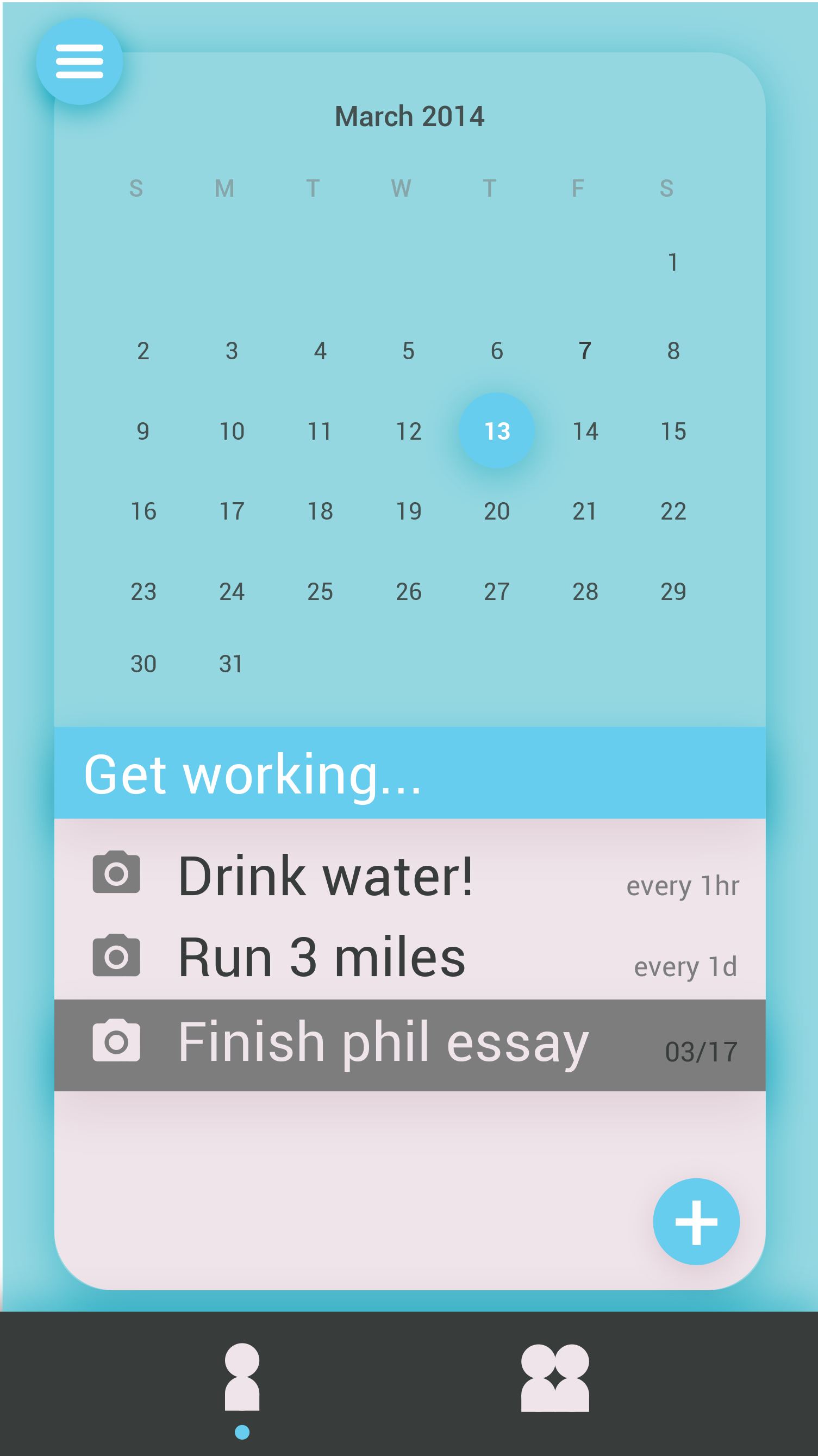
REVISIT
Second generation: Redesigning and refreshing an old idea
During my fourth-year at the University of Michigan, I was given a chance in a product design to revisit Cowork and improve its design on my own. The final deliverable was supposed to be a completely clickable high-fidelity prototype of a mobile app. I decided that Cowork's initial concept was perfect for a chance to improve on my own old designs, having been created with a lot of research and data to support its initial concept.
First thoughts: Enhancing the overall look and feel to be brighter and more vibrant
Taking a look back at the assets I created for the pitch deck, I thought the wireframes were dull and monochromatic. I was excited to add brighter colors and a cleaner look to the app. I also updated the logo to look more current, reflecting how my design sense has changed.
I built two conceptual wireframes. One exhibited a calendar and showed what it could look like with your calendar and deadlines and your coworker's calendar. The other wireframe was just the to-do list. The more I reflected between the two ideas, I found that having just one accountability partner might not be functionally successful.
Final iteration: Improving functionality by removing unnecessary features and focusing on a streamlined user experience
I pared down unnecessary features in my final adaptation. I inserted an onboarding process and changed the app from accountability matching to social accountability or community accountability, the concept of sharing deadlines, progress and events with multiple friends and groups. This meant that you could share your chores with your roommates so they could keep track of and hold you accountable, or share the deadlines of a group project with your teammates. This meant that the app could be used by more people and had a greater scope then just the obligation of being paired with a single individual.
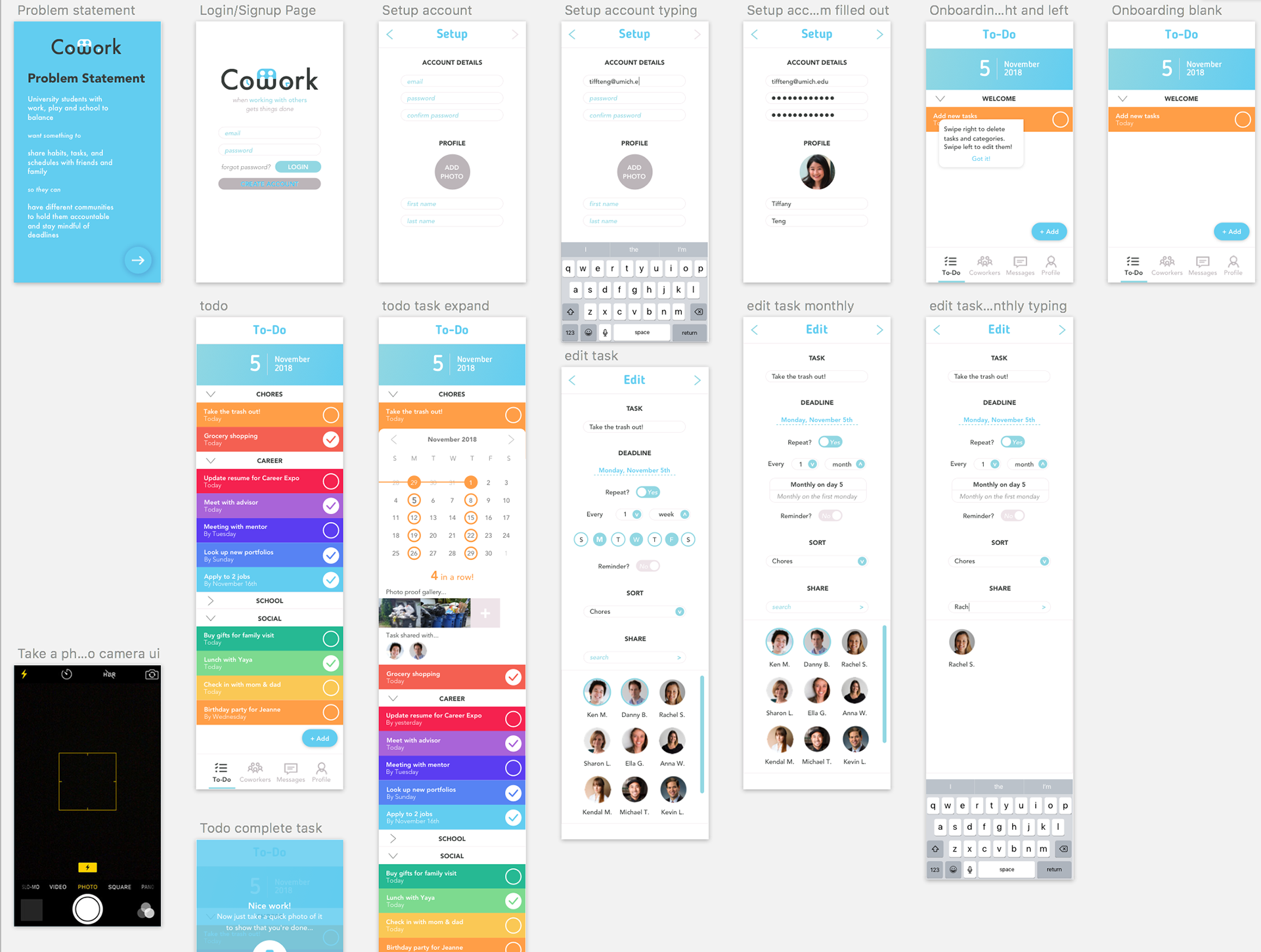

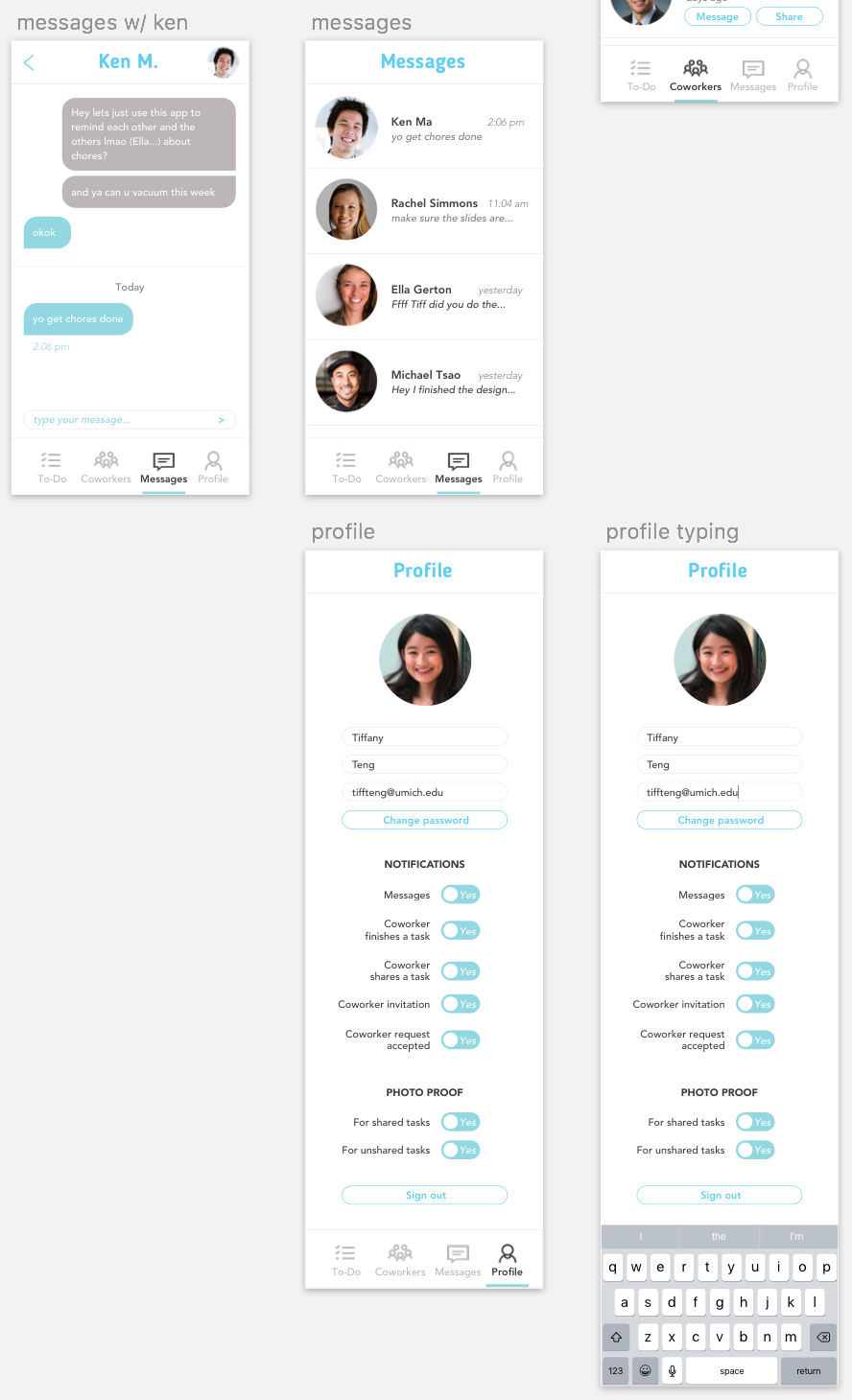
Final clickable prototype: Try it out
With the wireframes I created a final clickable prototype, below.
Future
Retrospective
If I ever revisit Cowork again I want to implement a clock feature that allows the user to 'clock in' together with a selected buddy (another user). The app real-time counting the amount of time spent with your phone turned off as you complete work and progress.
Taking a project I conceptualized before and then revisiting it again for a redesign of the execution was particularly fulfilling. Being able to work at a project over a longer period of time than normal showed me the importance of reflection and taking growth gained outside of the project and bringing it back to the table. I learned how to work in among a group of entrepreneurs and then take the idea and data we gathered to hone in on the interface and design aspect of the product.
These classes were both particularly fulfilling and successful. I was able to use these final projects to help secure my job as a Instructor's Assistant in an entrepreneurship class at the University of Michigan Ann Arbor, teaching product design to mainly upper classmen.
